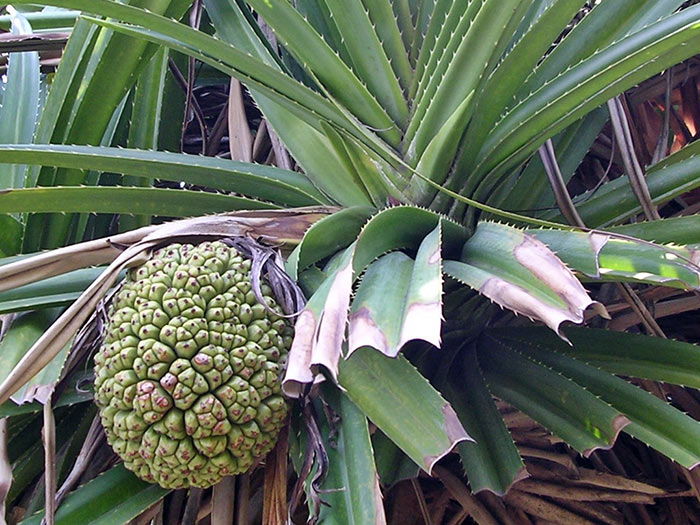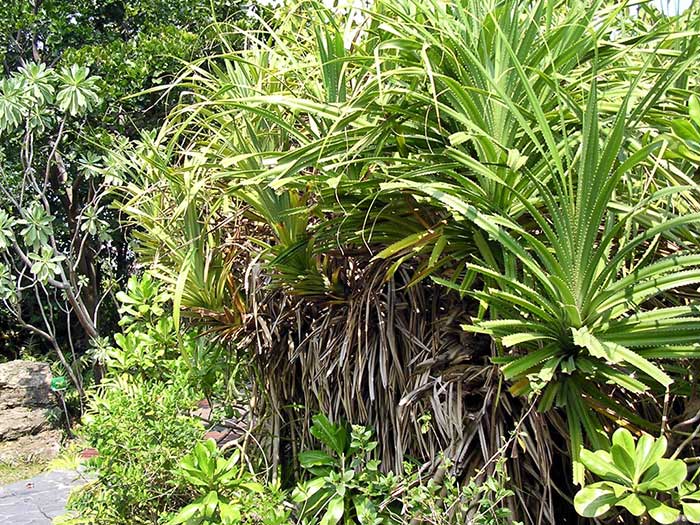Pandanus odoratissimus
The thatch screwpine is widely distributed in the Pacific coastal islands and grows in the forefront of the coastal forests closest to the sea, where it often gathers to form part of the coastal scrub, and is an extremely common seaside plant in Taiwan. It is planted in the Coral Atoll Area of the Botanical Garden, across the central pool from the Tropical Rain Forest Greenhouse, and is an important visual element of the waterfront landscape.
The thatch screwpine is an evergreen shrub or small tree. The trunk often bends upward, and even creeps to the ground in strong winds, with many branches, forming a dense thicket. The stems often grow aerial roots to absorb water from the air, and when they reach the ground, they thicken to become prop roots, which, together with the stilt roots growing at the base of the tree, stabilize the plant body and reduce damage caused by strong winds. The leaves are clustered at the top of the branches and can be over 100 centimeters long, and when they fall off, they leave a ring-shaped mark on the stem. There are sharp spines on the edges of the leaves and on the main veins on the abaxial surface. The fruits are gathered and arranged in a ball shape, resembling a pineapple. When ripe, the fruits are orange-yellow in color and emit a strong, sweet aroma, which is edible, but do not have much flesh. Most of the fruits are coarse fibers and will float in the water, and can be spread to different lands with the sea currents.
After removing the sharp spines, the leaves can be woven into hats, baskets, and other household items. The shoots can be cooked and eaten; and the stem is tough enough to be used as a pillar of the arbour. Troops stationed along the coast of Taiwan often planted this spiky plant around their barracks as a defense and barrier. Because of its wind-resistant, salt-resistant, and drought-resistant characteristics, it is also cultivated as a windbreak forest by residents of the coastal area for windbreak and sand fixation function.

